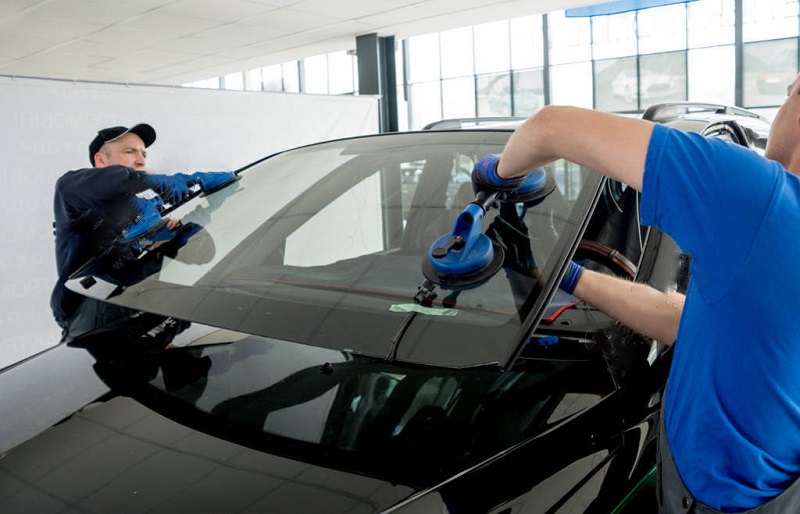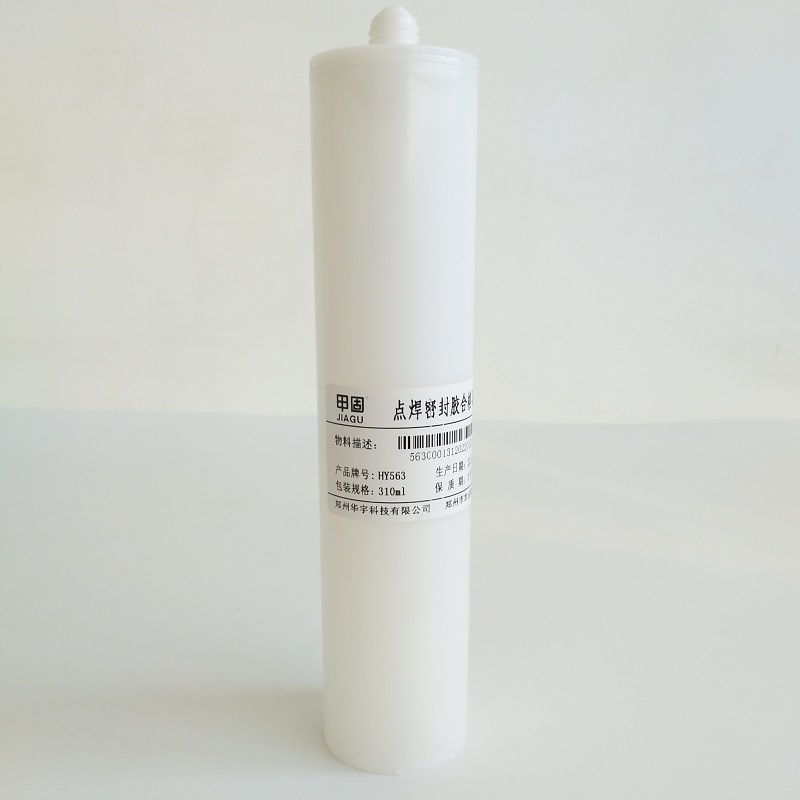As an essential auxiliary material in automobile production, sealant is becoming increasingly widely used. Body coating not only improves the sealing and waterproof performance of the entire vehicle, enhances NVH performance to achieve vibration reduction and noise reduction, but also plays an important role in achieving automotive lightweighting, energy conservation, and consumption reduction. In the production process of automobiles, adhesive coating technology is applied in welding workshops, painting workshops, and final assembly workshops. Here, this article focuses on the classification, performance, and process characteristics of adhesives used in welding and coating workshops.
& nbsp; & nbsp; With the development of manufacturing technology, sealant, as an essential auxiliary material in automobile production, is becoming increasingly widely used. Body coating not only improves the sealing and waterproof performance of the entire vehicle, enhances NVH performance to achieve vibration reduction and noise reduction, but also plays an important role in achieving automotive lightweighting, energy conservation, and consumption reduction. In the production process of automobiles, adhesive coating technology is applied in welding workshops, painting workshops, and final assembly workshops. Here, this article focuses on the classification, performance, and process characteristics of adhesives used in welding and coating workshops.

& nbsp; & nbsp; The glue coating process is a very important part of the manufacturing process of automotive body in white. Body coating not only improves the sealing and waterproof performance of the entire vehicle, enhances NVH performance to achieve vibration reduction and noise reduction, but also plays an important role in achieving automotive lightweighting, energy conservation, and consumption reduction< br />
& nbsp; & nbsp; The purpose and performance of welding adhesive
& nbsp; & nbsp; There are mainly five types of adhesives used in the welding workshop: edge glue, expansion glue, spot welding sealant, vibration isolation film, and structural glue< br />
& nbsp; & nbsp; Folding glue
& nbsp; & nbsp; Folding glue is mainly used for edging the exterior panels of car doors, engine hood, and trunk lid, replacing welding points to connect the inner and outer cover plates, avoiding dents caused by welding on the surface of the car body, and improving the appearance quality of the car body. The cross-sectional size of the folded edge adhesive is a semi-circular arc with a diameter of about 3mm, and the center of the semi-circular arc is about 2 degrees away from the inner surface boundary of the outer panel0.5mm.
& nbsp; & nbsp; Expansion adhesive
& nbsp; & nbsp; Expansion glue is mainly used between the inner and outer panels of the engine hood, trunk lid, top cover, and doors to reduce vibration and noise during driving and increase the comfort of the entire vehicle. When applying expansion adhesive, it is generally divided into strip-shaped expansion adhesive and point shaped expansion adhesive. The cross-sectional size of strip-shaped expansion adhesive is a semi-circular arc with a diameter of about 8mm, each segment is about 60-80mm long, and the interval between segments is about 40mm; The diameter of the dot shaped expansion adhesive is about 20mm (adjusted according to the distance between the plates), and the spacing between adjacent adhesive points is generally greater than 50mm.

& nbsp; & nbsp; Spot welding sealant
& nbsp; & nbsp; Spot welding sealant is mainly used for sealing the front, side, and floor panels to achieve waterproofing, dust prevention, and rust prevention, and to prevent dust from entering the joint area, as shown in Figure 2. The cross-sectional size of spot welding sealant is a semi-circular arc with a diameter of about 3mm, and the center of the circle is 7mm away from the boundary.
& nbsp; & nbsp; Vibration isolation glue
& nbsp; & nbsp; Vibration isolation glue is mainly used for door outer panels, side panel outer panels, and roof panels, with the main function of vibration reduction and improving the vehicle's NVH performance. The expansion rate range is 100% to 300%. The cross-sectional size of the vibration isolation adhesive is a circle with a diameter of about 6mm, and the adhesive is applied to the corresponding storage tank position< br />
& nbsp; & nbsp; Structural adhesive
& nbsp; & nbsp; Structural adhesive is mainly used for sealing connections between outer panel components and outer panel reinforcement components, replacing spot welding (no welding points or poor weldability are allowed on the surface of the outer panel), improving rigidity and sealing, and preventing water, dust, etc. from entering the interior of the vehicle body. Therefore, high bonding strength is required. The cross-sectional size of the structural adhesive is a circle with a diameter of about 3mm, and the adhesive is applied at a distance of about 7mm from the edge of the part< br />
& nbsp; & nbsp; Constraint conditions for welding and adhesive coating
& nbsp; & nbsp; In order to ensure the quality of the adhesive coating, process constraints need to be proposed for the vehicle body at the beginning of the design< br />
& nbsp; & nbsp; (1) When applying edge glue to the car body, in order to ensure the quality and space of the glue application, and to have good edge wrapping, there are the following requirements for the design of the edge wrapping (see Figure 4): d2≥ d1/2; d1≥ Glue width≥ d2。
& nbsp; & nbsp; (2) The location of the expansion adhesive coating should be clearly marked, and a sinking platform should be left at the adhesive point. At the same time, the coating form should be as similar as the spot welding form as possible, and grooves should be left at the adhesive strip< br />
& nbsp; & nbsp; (3) The direction of adhesive application requires that when applying adhesive to the vehicle body, it is not allowed to apply double-sided adhesive at the same position, only single-sided adhesive is allowed< br />
& nbsp; & nbsp; The purpose and performance of coating adhesive
& nbsp; & nbsp; There are three main types of adhesives used in the painting workshop: weld sealant, PVC anti stone impact coating, and cavity wax spraying< br />
& nbsp; & nbsp; & nbsp; Weld seam sealant
& nbsp; & nbsp; Weld seam sealant is mainly used for welding seams, overlaps, and holes and gaps that directly connect the inside and outside of the vehicle body between various sheet metal parts, to ensure the sealing of the vehicle body, prevent harmful substances such as water, gas, ash layer, and noise from entering the vehicle, improve the service life of the entire vehicle, enhance reliability, and NVH performance. The weld sealant in the invisible area after loading can be treated with a brush or scraper after the coating is completed to ensure sealing performance; For areas with appearance requirements, regular nozzles must be used to apply glue at designated positions, paying attention to covering gaps and holes. After gluing, it is not allowed to brush with a brush to ensure aesthetics. Weld seam glue must be used to fill the gap in the front floor process.
nine hundred and two
& nbsp; & nbsp; PVC anti stone impact coating
& nbsp; & nbsp; PVC anti stone impact coating is mainly used for the lower surface of the floor and the front and rear wheel covers to prevent damage to the vehicle floor and wheel covers caused by stones during driving. In addition, it also has some anti-corrosion, waterproof, and sealing functions. When spraying PVC coating, it is required to evenly cover the designated sheet metal of the vehicle body and cover the welds without defects such as bubbles or sagging. The coating thickness must meet the design requirements. When spraying PVC adhesive, protective measures should be taken for the installation holes and nearby surfaces used in other parts to avoid being covered by PVC adhesive. As shown in Figure 6, when applying PVC anti stone impact coating, it should be sprayed to the edge of the stopper to ensure sealing and waterproofing.
nine hundred and three
& nbsp; & nbsp; Cavity wax spraying
& nbsp; & nbsp; Wax for painting is mainly used to paint the cavity of the fixing point of the slider, mainly covering the inner surface of the cavity sheet metal with wax (see Figure 7), ensuring the corrosion resistance of the sheet metal inside the cavity, preventing substances such as water, gas, and dust from directly contacting the sheet metal, and improving the corrosion resistance of the entire vehicle< br />
& nbsp; & nbsp; The gluing process is a very important part of the manufacturing process of automobile body in white. With the improvement of automobile manufacturing technology, the variety, performance, and process specifications of body gluing are constantly optimized and improved, and the gluing equipment is gradually updated and replaced. At present, many foreign automobile manufacturing companies have adopted the method of robot coating to ensure stable and reliable coating quality, in order to meet the requirements of vibration reduction, noise reduction, NVH, and rust prevention sealing of the vehicle body< br />
& nbsp; & nbsp; With the rapid development of the automotive industry in the past 20 years, there are already thousands of domestic manufacturers of automotive adhesives, which can basically meet the needs in the main varieties. However, further work is needed to improve product quality and adapt to large-scale assembly line production processes for automobiles. The dependence on imported adhesives is still high, and the degree of mechanization and standard operations are comparable to advanced foreign countries ?In the future, automotive adhesives need to make breakthroughs in bonding lightweight materials and composite materials.

